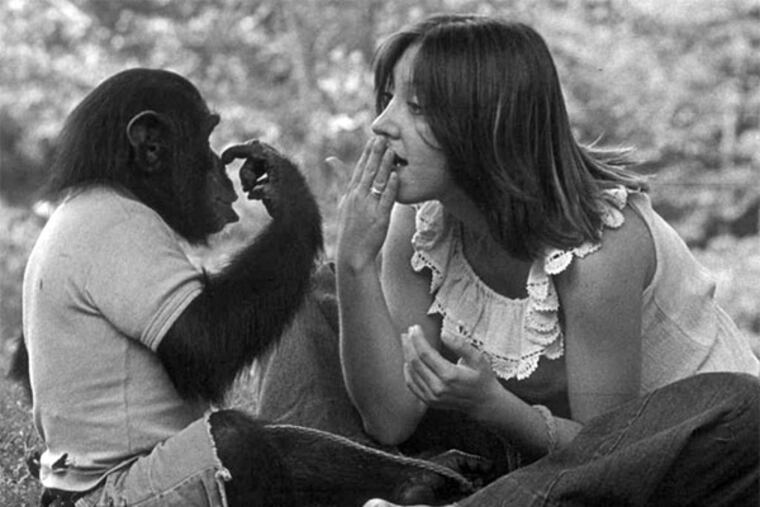Ellen Gray: 'Project Nim': Bad experiment goes awry
* PROJECT NIM. 9 p.m. Thursday, HBO. IF NIM Chimpsky were alive today and his life had gone a little differently, he might have his own raucous "reality" show on MTV instead of just the occasional appearance on "Sesame Street."

* PROJECT NIM. 9 p.m. Thursday, HBO.
IF NIM Chimpsky were alive today and his life had gone a little differently, he might have his own raucous "reality" show on MTV instead of just the occasional appearance on "Sesame Street."
Maybe even a clothing line.
And thanks to the American Humane Association's production guidelines, he'd likely have a saner life than he did at the hands of the people who, in the name of science, took a baby chimpanzee from his mother to be raised like a human child, taught him to speak in sign language - and to smoke pot - and then passed him along like an outgrown toy.
That, at least, was what I took away from "Project Nim," a fascinating, infuriating 2011 documentary about a sloppily run 1970s experiment that makes its television debut on HBO Thursday.
Tearing a chimp born in an Oklahoma facility away from its mother a few days after birth and sending it to live in a New York City brownstone with a freewheeling human family - what could possibly go wrong?
Just about everything, it turns out.
Based on Elizabeth Hess' book Nim Chimpsky: The Chimp Who would Be Human and directed by Oscar winner James Marsh ("Man on Wire"), "Project Nim" is as much a drama about the humans who interacted with Nim as it is about the chimp.
And what makes it particularly riveting is that even now, as they look back in interviews, some of the humans don't seem to have learned as much as Nim did.
What might have been the chief focus of another film - did Nim indeed learn language in the way a human child might, or merely employ American Sign Language in the most rudimentary fashion, to beg? - becomes the B-story here, as we ponder the motives of Columbia psychology professor Herbert Terrace, of Nim's first foster mother, Stephanie LaFarge, and of the various other people who moved in and out of Nim's life as the years went on.
Some literally bear the scars of that relationship - communicative or not, Nim wasn't a cuddly toy but a potentially lethal creature - though Terrace himself seems nearly untouched by the whole experience.
Watching, I couldn't help but think of HBO's "Cinema Verite," a scripted drama about public television's 1970s "reality" series "An American Family."
Like that film, "Project Nim" is as much a story about the times in which Nim and his keepers lived as it is about the chimp they used to ask questions whose answers were probably always going to be more about themselves than they were about Nim.